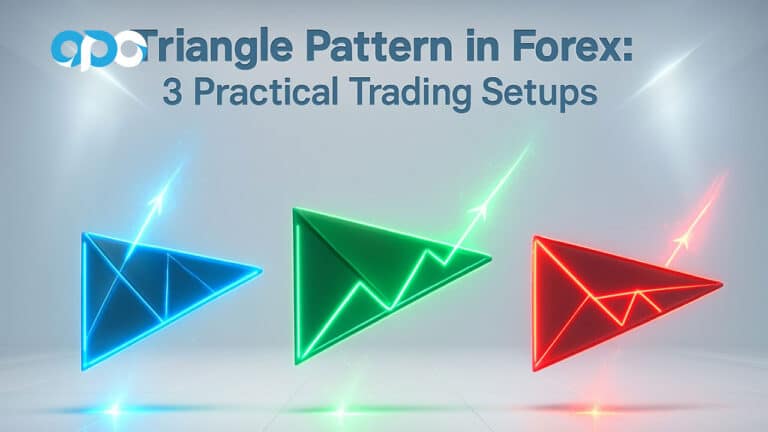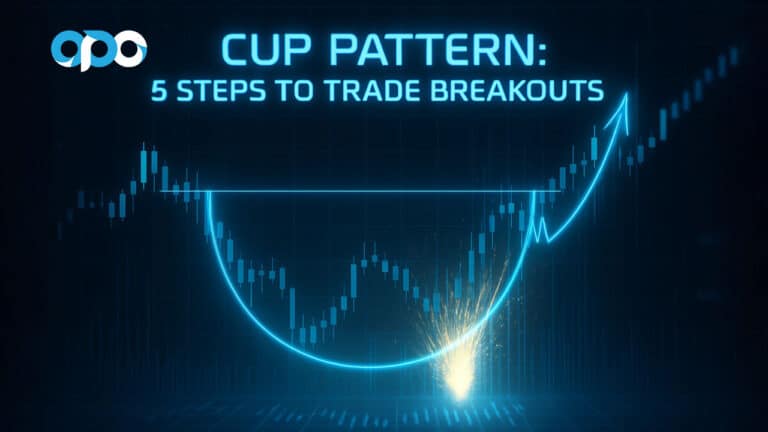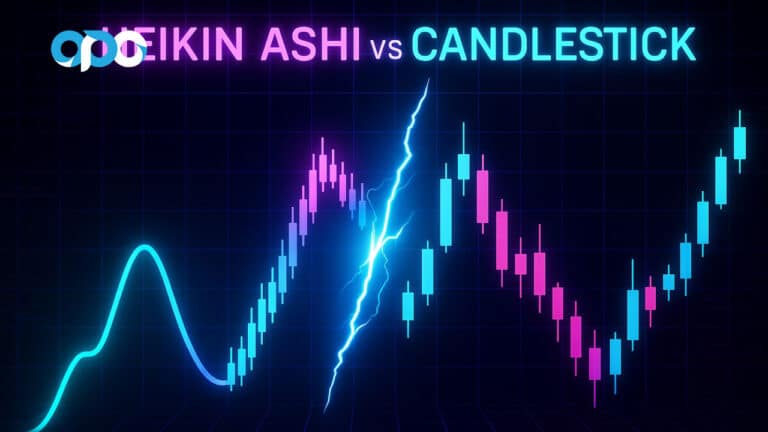In the world of trading, particularly in forex, understanding how market gaps function can be the key to unlocking consistent profits. One of the most effective strategies for interpreting these gaps is the ICT Opening Range Gap strategy. This blog will provide a comprehensive overview of this powerful trading technique, answer frequently asked questions, and offer actionable insights that can transform your trading approach. Whether you’re a novice trader or a seasoned pro, this guide is designed to enhance your understanding and execution of the ICT Opening Range Gap.

The ICT Opening Range Gap strategy is a critical tool for traders looking to capitalize on market inefficiencies that occur at the opening of trading sessions. By focusing on how gaps are formed and how they are likely to be filled, traders can gain an edge in predicting market movements. This strategy is particularly valuable for those using a regulated forex broker like ASIC-regulated Opofinance, which ensures a secure and transparent trading environment. In this guide, we’ll break down the ICT Opening Range Gap strategy, providing you with everything you need to master this technique and improve your trading performance.
Understanding the ICT Opening Range Gap Strategy
What Is the ICT Opening Range Gap?
The ICT (Inner Circle Trader) Opening Range Gap refers to the price gap that occurs between the closing price of the previous trading session and the opening price of the current session. This gap is a crucial indicator of market sentiment and can provide insights into the likely direction of the market for the rest of the trading day.
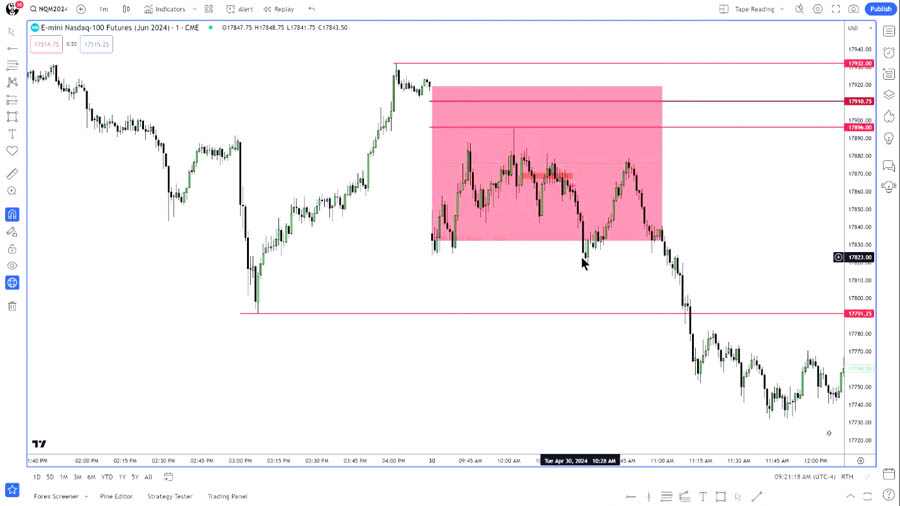
In bearish scenarios, the gap may remain partially unfilled, indicating strong downward momentum. Conversely, if the gap is filled quickly, it might suggest a potential reversal or a lack of conviction in the current trend.
Why Is the Opening Range Gap Important?
The Opening Range Gap is important because it often sets the tone for the day’s trading session. Traders who can correctly interpret the significance of this gap can make informed decisions about entering or exiting positions. The gap acts as a barometer of market strength or weakness, giving traders a clear indication of whether the market is likely to move higher or lower throughout the day.
Interpreting Price Action in the ICT Opening Range Gap
One of the most critical aspects of the ICT Opening Range Gap strategy is interpreting price action correctly. This involves analyzing the behavior of candle bodies and wicks, understanding how they relate to the gap, and determining the most probable price movement.
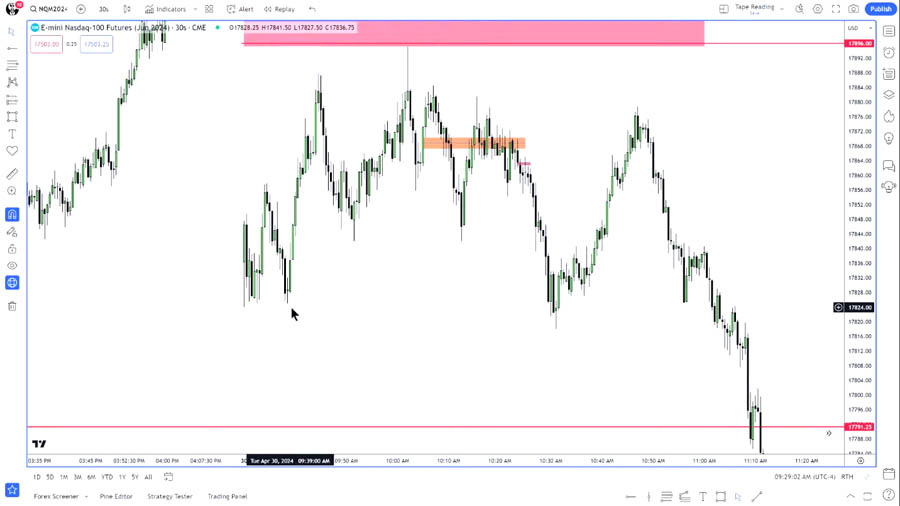
- Body and Wick Movements: Candle bodies provide essential clues about the strength of a move. For example, if the body of a candle closes above a key level after a gap, it suggests that the market is likely to continue in that direction. Wicks, on the other hand, often represent stop-loss hunts and may not indicate a true reversal.
- Stop Loss Placement: Proper stop-loss placement is crucial in managing risk when trading gaps. Placing stop losses too close to the opening range can result in premature exits due to market noise. Instead, it’s advisable to place stop losses beyond key levels where the market is less likely to reach unless a true reversal is underway.
- Gap Filling in Bearish Scenarios: In bearish scenarios, a partially unfilled gap suggests that the market is under significant selling pressure. If the gap isn’t filled, it indicates strong bearish sentiment, and traders should be cautious about taking long positions until there’s clear evidence of a reversal.
Analyzing the Opening Range Gap in Bearish Scenarios
When dealing with bearish scenarios, the behavior of the Opening Range Gap becomes even more critical. Understanding why the gap may remain unfilled can provide valuable insights into the market’s direction.
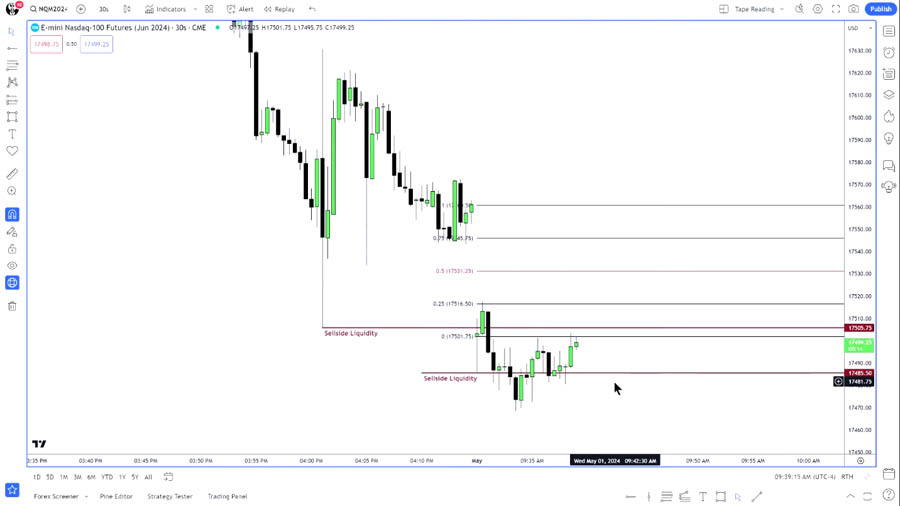
- The Importance of Not Filling the Gap: If the market fails to fill the gap, it’s often a sign that the current bearish trend is likely to continue. This incomplete gap fill suggests that sellers are still in control and that the market may move lower before finding support.
- Significance of Inefficiencies: Inefficiencies, such as fair value gaps, are areas where the market has not fully priced in certain factors. These gaps often act as magnets for price, drawing it toward them before the market can resume its trend. In bearish scenarios, unfilled inefficiencies indicate that the market is likely to continue moving lower.
- Behavior of Bodies and Order Blocks: The bodies of candles that fail to close above significant levels, such as the midpoint of a gap or an order block, signal that the market is still in a bearish phase. These levels act as decision-making points, where traders can determine whether to continue holding a bearish position or look for potential reversal signs.
Understanding Market Structure in Relation to the ICT Opening Range Gap
Market structure is a fundamental concept in trading that helps traders understand the current state of the market and anticipate future movements. In the context of the ICT Opening Range Gap strategy, market structure provides the framework for interpreting price action and making informed trading decisions.
- Observing Swing Lows and Market Structure Shifts: Swing lows are critical points in the market that indicate where buyers have previously stepped in. When the market takes out these swing lows, it often signals a shift in market structure from bullish to bearish. However, it’s essential to wait for confirmation before entering a trade, as the market may still be in a consolidation phase.
- Role of Smart Money in Accumulating Short Positions: Smart money, or institutional traders, often accumulate short positions during these phases by exploiting the liquidity available when the price manipulates levels that trigger stop-losses for long positions. Understanding this dynamic can help retail traders position themselves on the right side of the market.
Identifying Support and Resistance Levels Using the ICT Opening Range Gap
Support and resistance levels are critical for determining where the market is likely to reverse or continue its trend. The ICT Opening Range Gap strategy offers a unique approach to identifying these levels, focusing on volume, inefficiencies, and body movements.
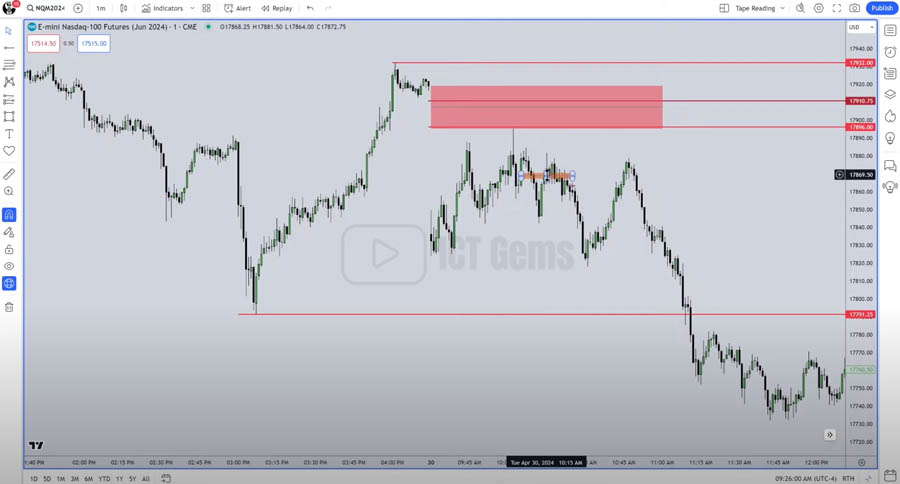
- Volume and Inefficiency-Based Levels: Traditional support and resistance levels are often based on pivot points or historical highs and lows. However, in the ICT Opening Range Gap strategy, true support and resistance are more likely found in areas of inefficiency, such as fair value gaps. These gaps represent areas where the market has not fully balanced supply and demand, making them key levels to watch.
- Body Movements as Indicators: The behavior of candle bodies around these levels provides essential clues about the market’s likely direction. For instance, if the bodies consistently close below the midpoint of a gap, it suggests strong resistance and a potential continuation of the bearish trend.
Predicting Market Direction with the ICT Opening Range Gap Strategy
Predicting market direction is the ultimate goal of any trading strategy. The ICT Opening Range Gap strategy provides traders with the tools they need to make accurate predictions based on volume imbalances and liquidity.
- Volume Imbalances and Smooth Levels: When the market trades into a volume imbalance, it often moves aggressively toward smoother levels where liquidity is more abundant. This aggressive move can provide a clear indication of the market’s direction for the rest of the trading session.
- Liquidity Pool Reduction: As the market slowly moves lower, the pool of available liquidity diminishes, particularly if traders with long positions start exiting. This reduction in liquidity can lead to sharper downward moves as smart money looks to exploit the remaining liquidity.
Read More: Mastering The Forex Gap Trading
Market Liquidity and Range Expansion
Liquidity is the lifeblood of the market, and understanding how it affects price movements is crucial for successful trading. In the context of the ICT Opening Range Gap strategy, liquidity plays a significant role in determining whether the market will experience a range expansion.

- Impact of Liquidity on Market Movements: Liquidity drives market movements, particularly when smart money has positioned itself on one side of the trade. When liquidity dries up, the market often sees a quick move in the direction where liquidity is still present, typically leading to significant range expansion.
- Expectation of Large Ranges: Large ranges occur when the market has completed its work, trapping traders on the wrong side. Smart money then drives the market in the direction where there is still liquidity to be captured, typically leading to a strong directional move.
Retesting and Decision-Making Levels in the ICT Opening Range Gap Strategy
Retesting key levels is a crucial aspect of the ICT Opening Range Gap strategy. These retests provide traders with decision-making points and opportunities for entry based on institutional order flow.
- Importance of Retesting the Midpoint: The midpoint of a gap or inefficiency acts as a critical level for determining whether the market will continue in its current direction or reverse. Failure to reach or break this midpoint suggests that the current trend has strong momentum.
- Parameter for Decision-Making: The midpoint, similar to the mean threshold in an order block, serves as a benchmark for deciding whether to enter or exit a trade. If the market supports price at this level without retracing fully, it signals a continuation in the direction of the current trend.
- Institutional Order Flow Entries: After confirming the trend on a higher time frame, traders can drop down to a lower time frame to identify a fair value gap for entry. This approach minimizes risk by aligning with institutional order flow, ensuring that the trade is within the price delivery continuum.
Opofinance: The Ideal Partner for Forex Traders
If you’re looking for a regulated forex broker that aligns with the principles of the ICT Opening Range Gap strategy, Opofinance is an excellent choice. As an ASIC-regulated broker, Opofinance offers a secure and transparent trading environment, ensuring that your trades are executed with the highest level of integrity.

Opofinance’s platform is designed to meet the needs of both novice and experienced traders, offering a wide range of tools and resources to enhance your trading experience. One of the standout features of Opofinance is its social trading service, which allows you to follow and copy the trades of successful traders. This feature is particularly valuable for those who are new to the ICT Opening Range Gap strategy, as it provides an opportunity to learn from the experts while making profitable trades.
With Opofinance, you can trade with confidence, knowing that you’re backed by a broker that prioritizes your success. Whether you’re interested in forex, commodities, or indices, Opofinance has the tools and resources you need to excel in the markets.
Read More: Mastering The Opening Range Breakout Trading Strategy
Conclusion
The ICT Opening Range Gap strategy is a powerful tool in the arsenal of any serious trader. By understanding how to interpret gaps, identify key levels, and predict market direction, you can significantly improve your trading performance. This strategy, when combined with a reliable and regulated forex broker like Opofinance, can provide the foundation for consistent and profitable trading.
Remember, the key to success in trading is not just having the right strategy, but also the discipline to execute it consistently. By mastering the ICT Opening Range Gap strategy, you’ll be well on your way to achieving your trading goals.
What is the best time frame to use with the ICT Opening Range Gap strategy?
The best time frame depends on your trading style. For intraday traders, a 15-minute to 1-hour chart is typically effective. For swing traders, the 4-hour and daily charts are more suitable. It’s essential to align your time frame with the overall market structure and the specific gaps you’re analyzing.
How does the ICT Opening Range Gap strategy differ from other gap trading strategies?
Unlike traditional gap trading strategies that focus solely on filling the gap, the ICT Opening Range Gap strategy takes into account market structure, inefficiencies, and institutional order flow. This comprehensive approach provides a deeper understanding of market dynamics, allowing for more accurate predictions and better risk management.
Can the ICT Opening Range Gap strategy be used in markets other than forex?
Yes, the ICT Opening Range Gap strategy can be applied to other markets such as commodities, indices, and equities. However, it’s essential to understand the unique characteristics of each market and adjust your analysis accordingly. For example, gaps in the stock market may behave differently than those in the forex market due to varying liquidity and market hours.



